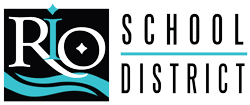The Reading Classroom
The Reading Classroom
Rio School District children are thriving in many ways. Our recent years’ emphasis on critical thinking, communication, collaboration, creativity, and caring has helped the adults in our organization create classroom and school environments that are suitable for young children’s development as full human beings as well as supporting their literacy development which is so essential to their success and sense of confidence in school systems and other contexts that demand high levels of reading, writing, and speaking. While I believe the above statement is evidenced in many ways we continue to look for the right mixtures of environment, tools, methods, practices to create classrooms across every school that help every child to progress to their maximum potential as readers.
This year we are focusing on reading interest, fluency, and meaning making. We put reading interest first in this order because we believe that fluent – meaning making readers are first and foremost interested readers. Next in the order is fluency that we basically define as the ability to decode and produce the text at a rate sufficient to support the reader’s meaning making of the text. Lastly, and most importantly in academic contexts like schools, we aim for children’s meaning making which includes their basic comprehension and understanding of the texts but expands to their ability and choices of ways to express the meanings they have read through writing, speaking, drawing or other media. This short post is a description of an idealized reading classroom from the point of view of the superintendent, educational researcher, and teacher. Its purpose is to spark further discussion and then actions across our District and others that have common goals in helping more children become interested, fluent, and meaning making readers.
In California we typically have 180 school days per year and we divide the years into things we call grade levels. We typically assign one teacher to a group of children for this year in elementary grades and more than one teacher to children in the middle grades years. Regardless of the structure I think it’s important to state early in the post that an idealized school context for readers is one where every teacher in every grade and every subject is a reading teacher involved and invested in each child’s development as interested, fluent, meaning making readers. This post is my description or listing of activities that are observable and should or could be observable in as many of those 180 days as possible across a school year. As a student of learning I know that in almost every context, repetition and time are key elements in learning. Things we do almost every day are understood by children as important as we have valued them by apportioning time to them.
So here we go, here is what a good reading classroom looks like from my point of view in terms of things you see commonly and every day as much as possible.
Reading classrooms let kids read freely for extended periods every day and give them choice in the texts they read.
Reading classrooms have many books in them and also provide access to libraries and other ways to access texts online and otherwise.
Reading classrooms have teachers and educators that read and model reading authentically in their lives not just as professional practice but because they are truly interested, fluent, meaning making readers themselves.
Reading classrooms provide daily opportunities for children to write about their reading and get regular feedback from their teacher and peers on this writing.
Reading classrooms have regular opportunities for all children to be read to. To hear read alouds.
Reading classrooms have teachers who have learned and who are learning about the reading process and who are constantly developing their practices to help children directly and indirectly to become interested, fluent, and meaning making readers through whole group, small group, and one one work with children.
Reading classrooms are visibly rich with texts and the artifacts of reading and writing.
Reading classrooms are very word rich in that they evidence high interest in the acquisition and exploration of words.. the basic units of language…
Reading classrooms have flexibility associated with the different children who populate them. They help the actual children learn to become or develop as readers rather than a homogenized standard established by others outside the classroom.
Reading classrooms have many opportunities for children to read with each other and to read the writing of their peers.
Reading classrooms have socio-emotional environments that create acceptance among all in the classroom for every child as reader regardless of their current status on spectrum across the three elements of interest, fluency, and meaning making.
Reading classrooms provide access and focus on texts that connect with the classroom children’s lives as well as new horizons they have never experienced.
Reading classrooms provide access and engagement with a variety of genre of texts and texts on and in a variety of media.
Reading classrooms strike a balance towards fun in reading but save the space for struggle as is necessary and appropriate in the context.
Reading classrooms are writing classrooms, are drawing classrooms, are literacy classrooms, and are reading more than text classrooms. Reading text is one key but major thrust in learning environments that focus every child to become interested, fluent, meaning making LEARNERS who understand that reading texts is a critical part their learning.
The list could surely go on but I think I will leave it at this for the moment as an invitation to educators and readers out there to add to the post. I will gladly take your thoughts, comments and ideas emailed to jpuglisi@rioschools.org and then see where they go from there. A community of readers working together thoughtfully is likely the best way to support the development of the next generation of readers. In nearly three and a half decades of this work, my wife and I continue to look for ways to increase the numbers of children we are able to guide as truly interested, fluent, and meaning making readers. For child readers living in less economically resourced contexts this is critically important so that they do not fall into the statistical reality that Demography is Destiny. For all children, and for our country, a generation of interested, fluent, and meaning making readers is essential for our democracy to function as one that is driven by an informed and thoughtful citizenry.
BLOG CATEGORIES



1 Comment. Leave new
This is the work of equity and books in children’s hands will provide experiences to build on.